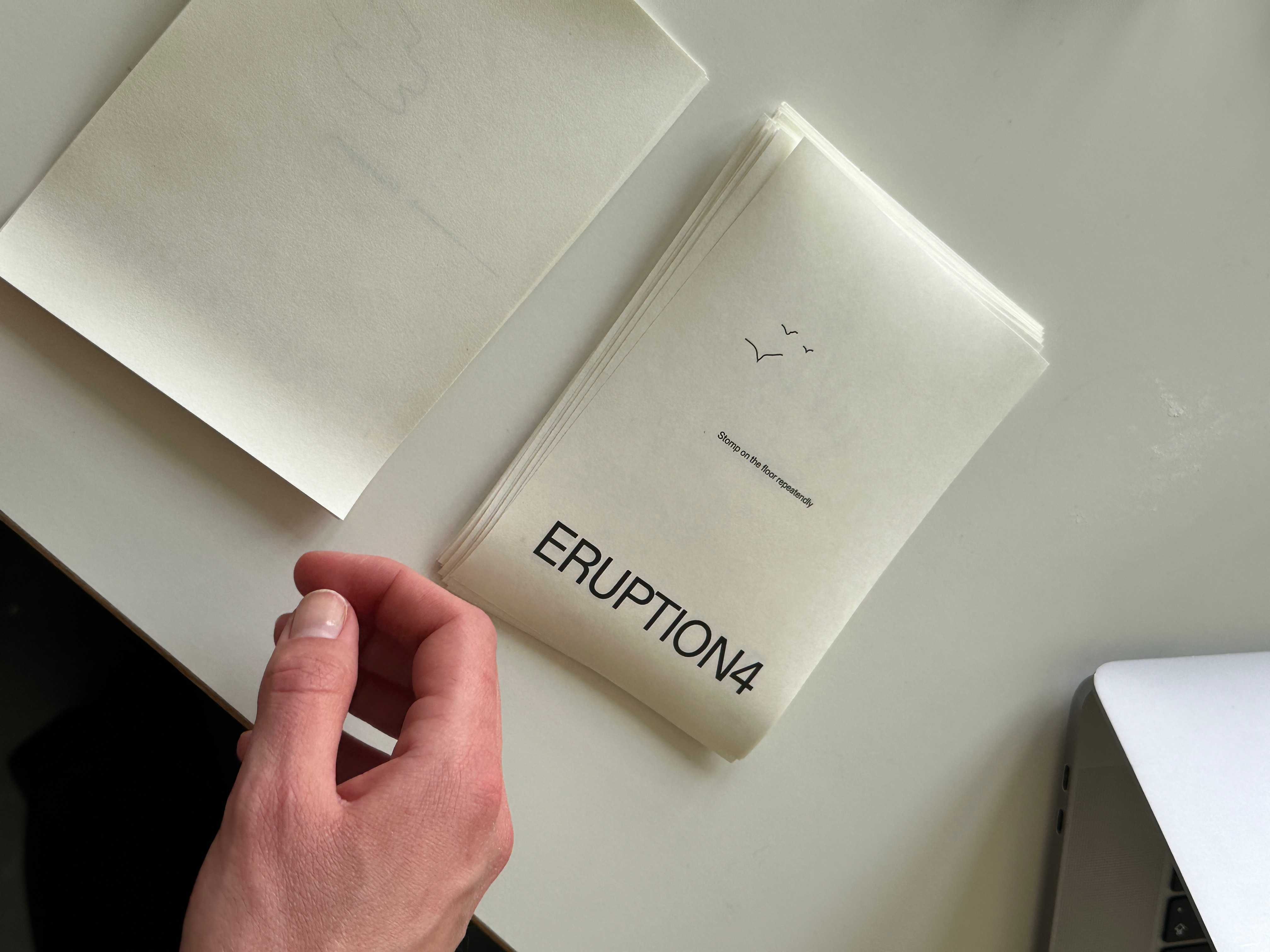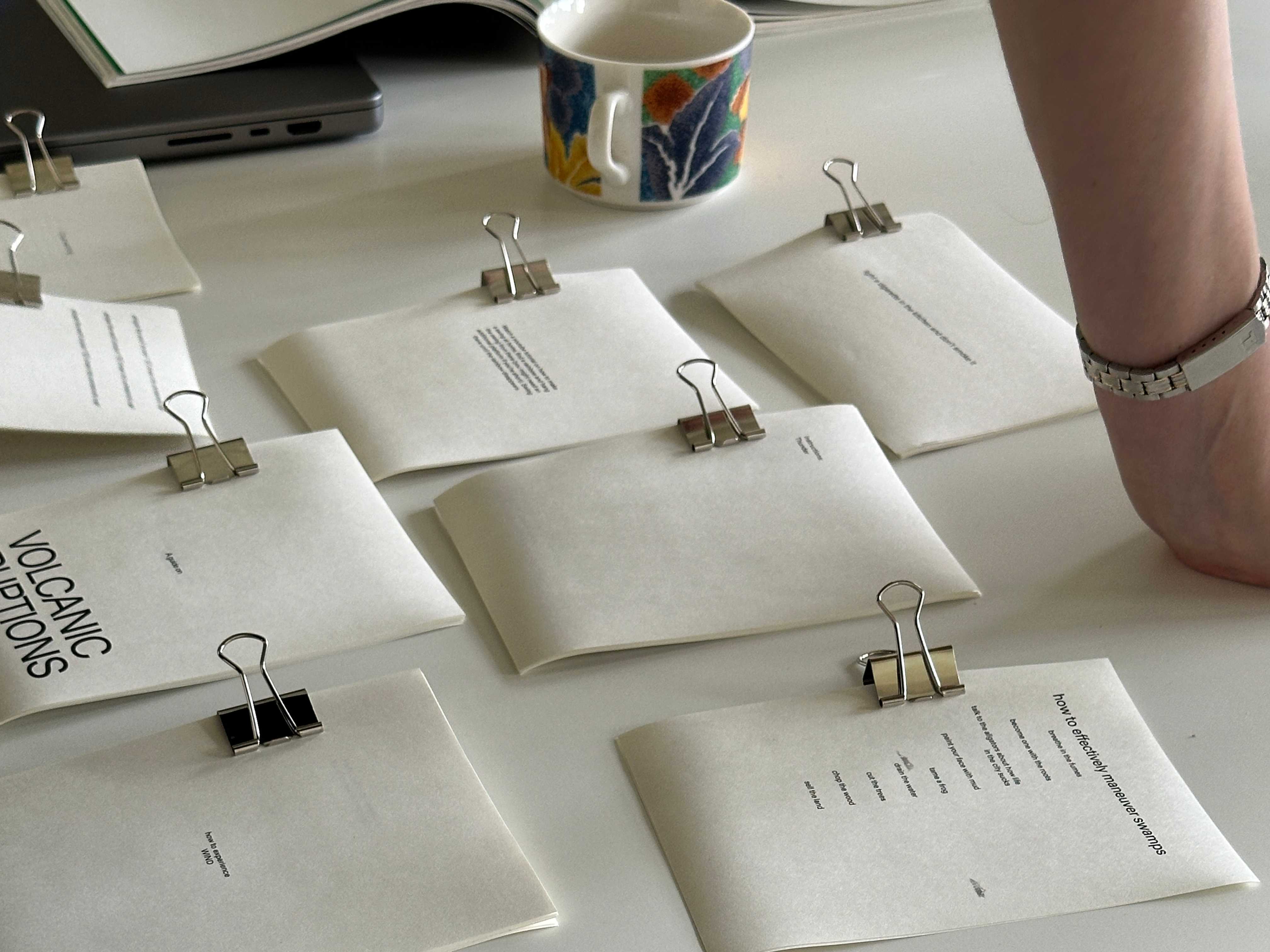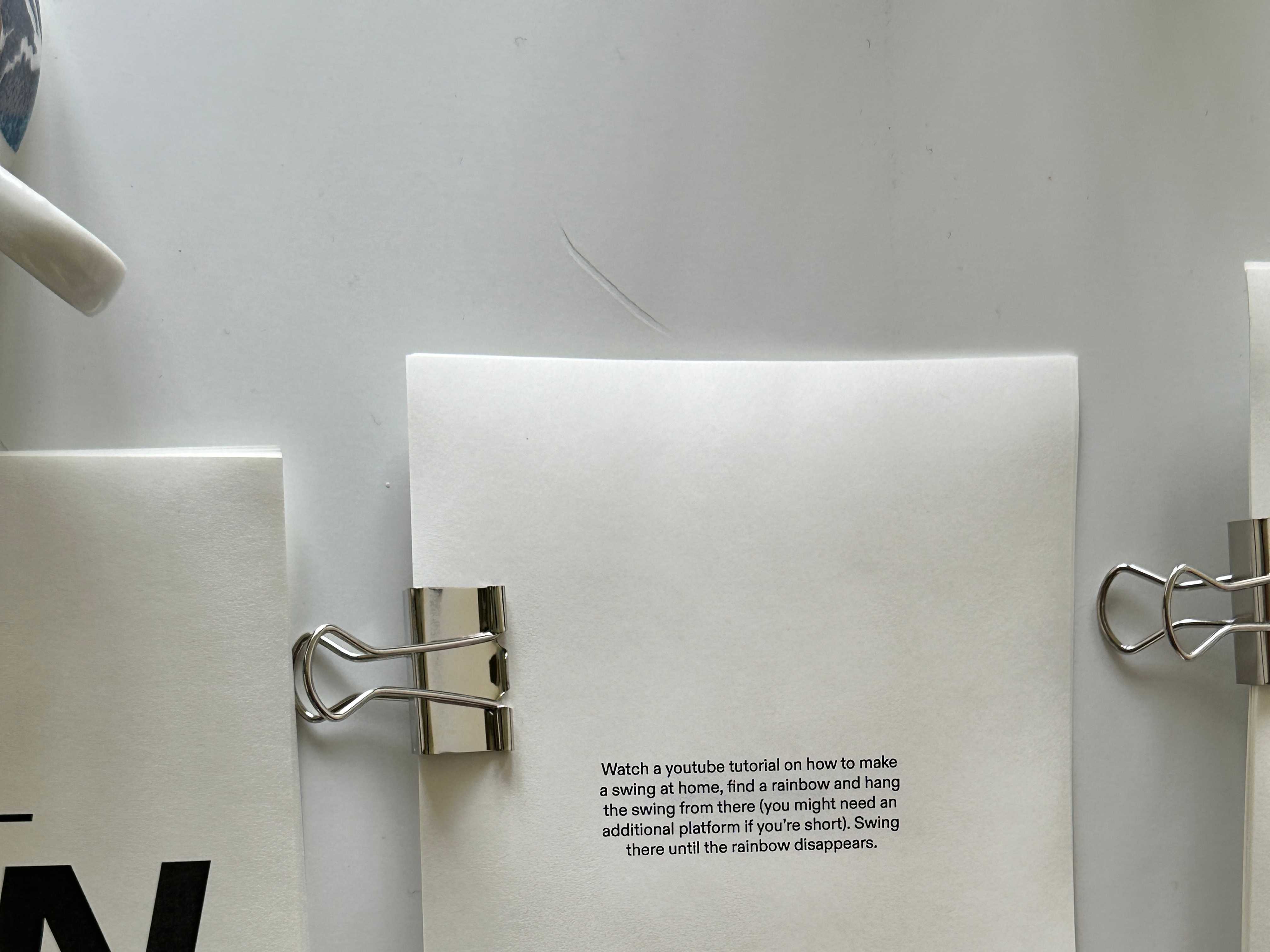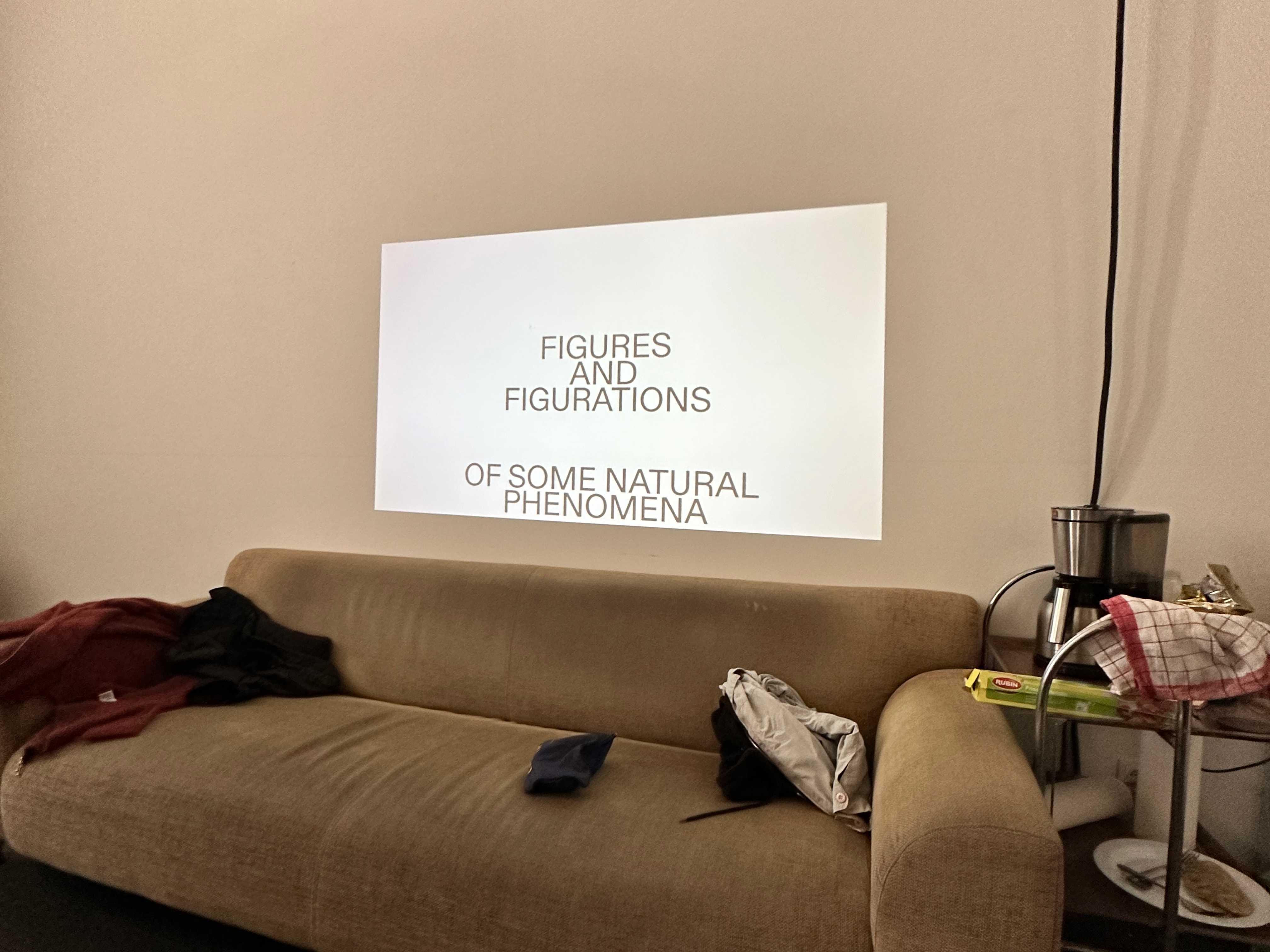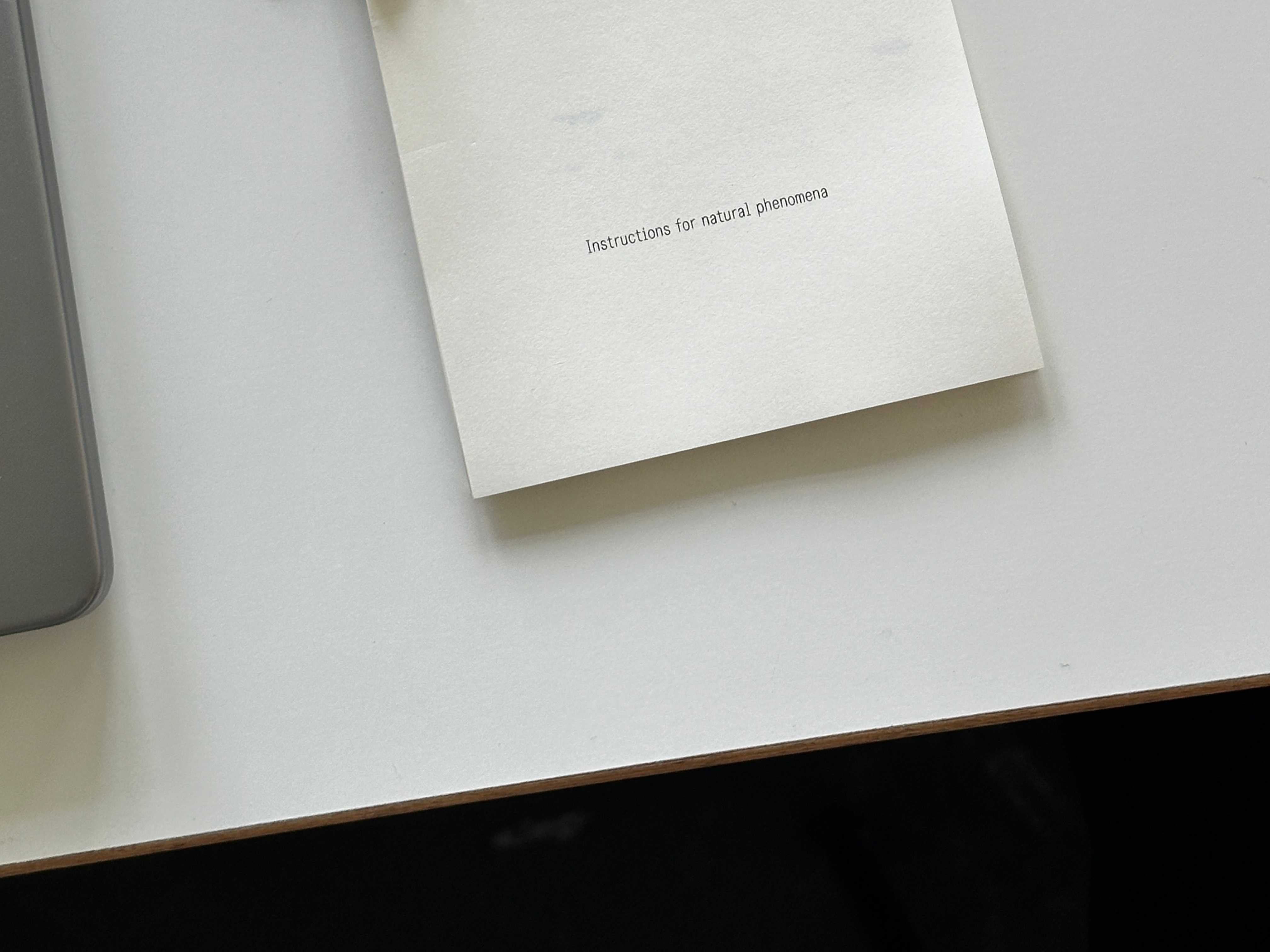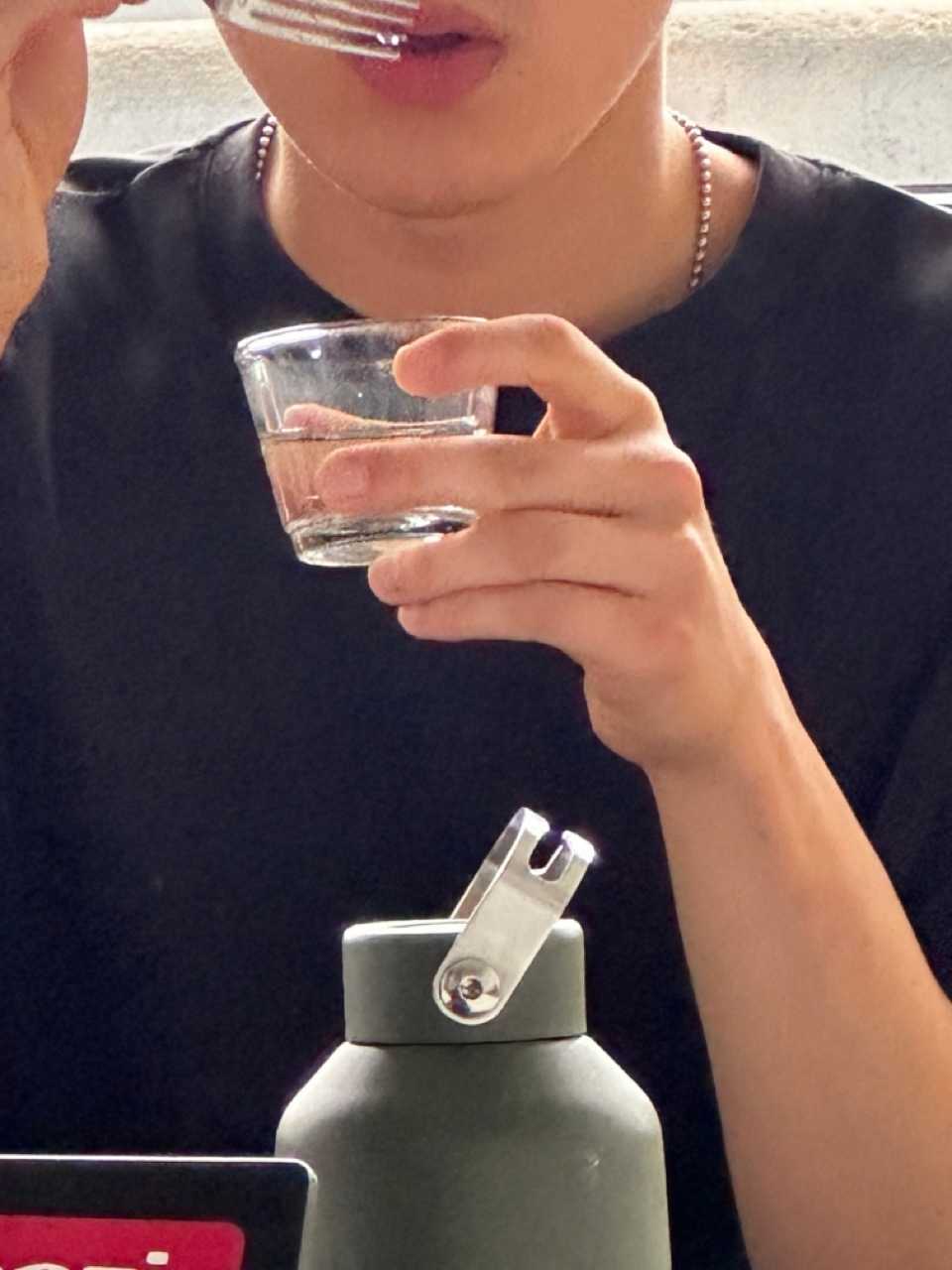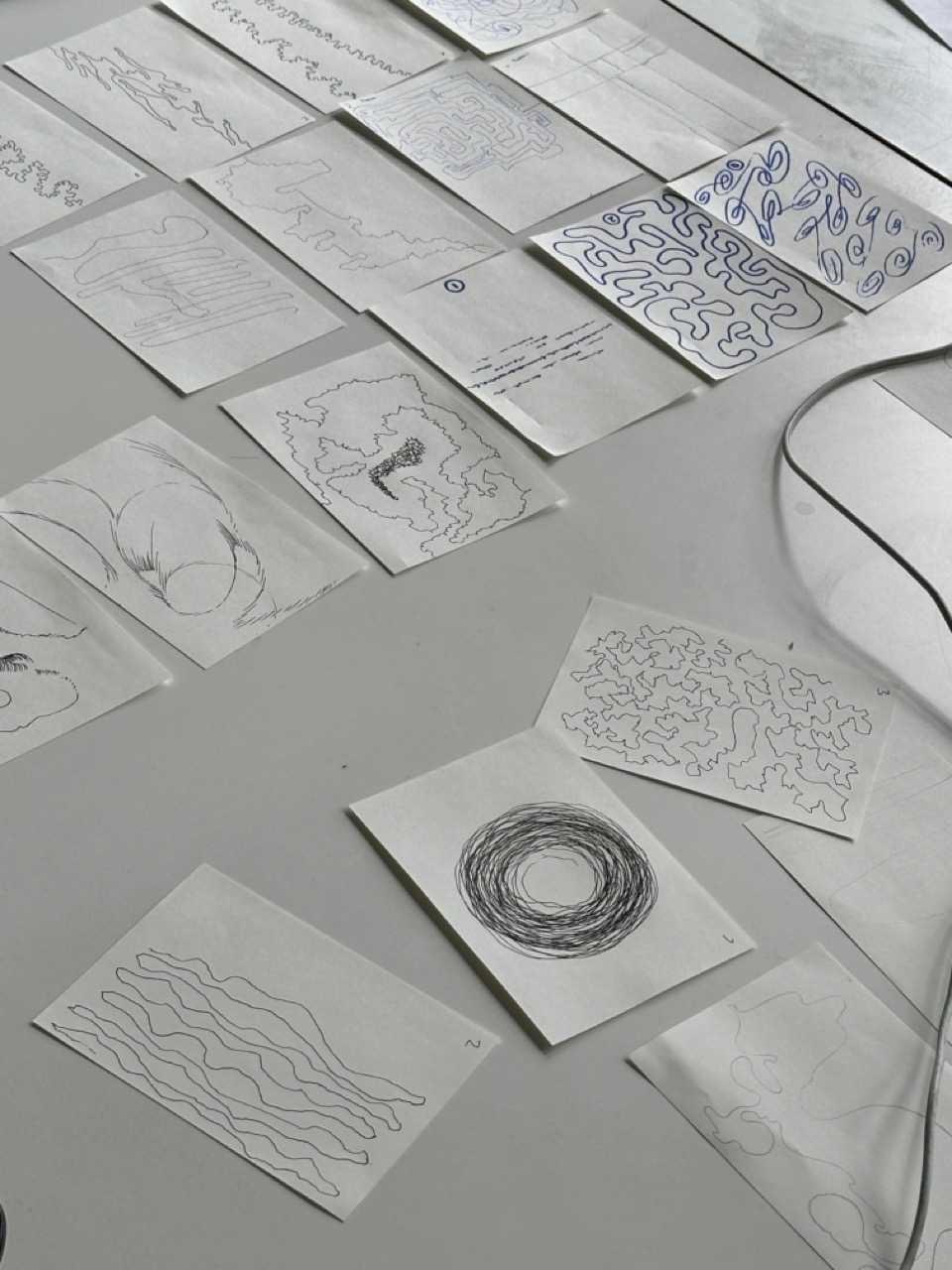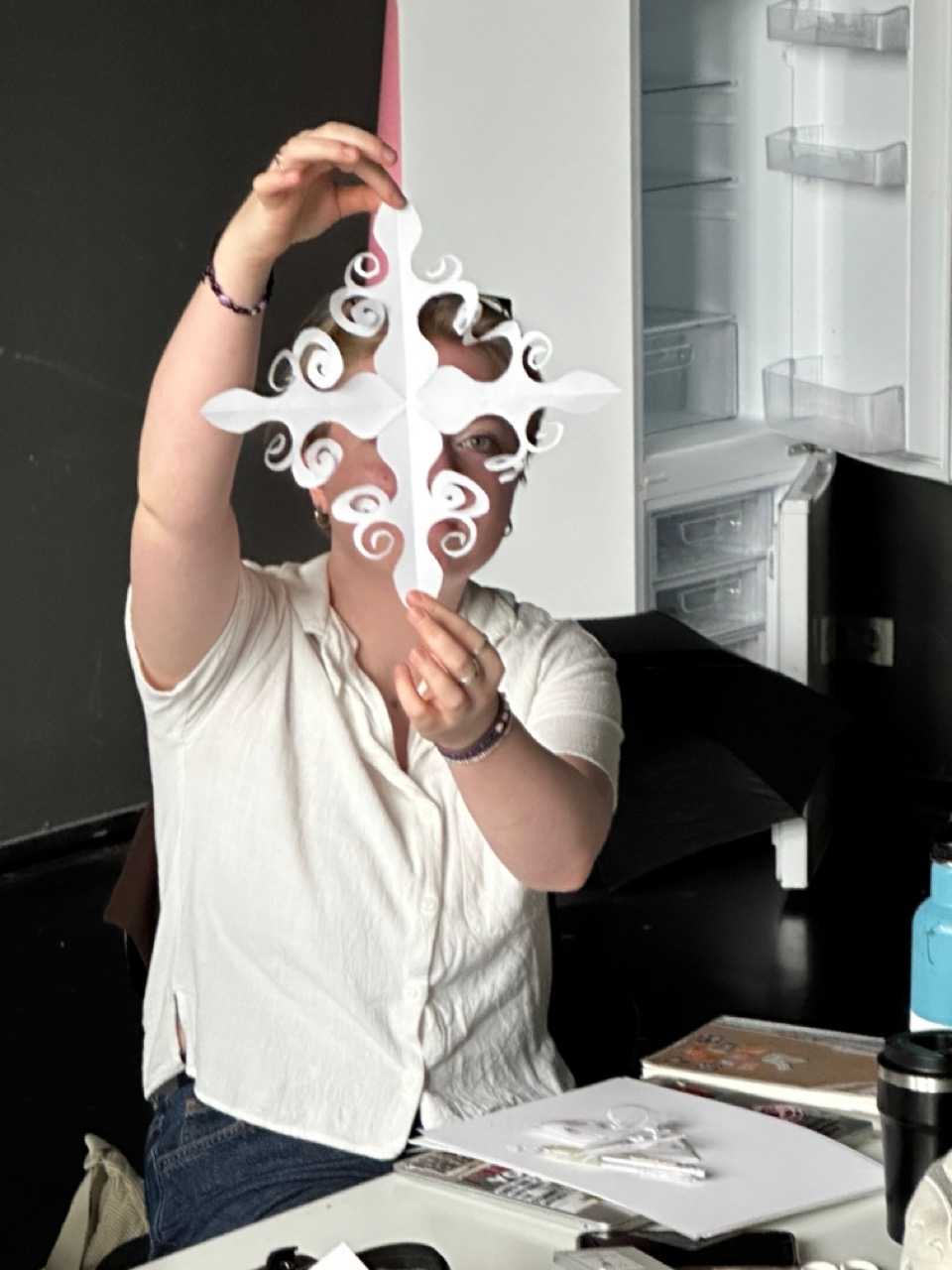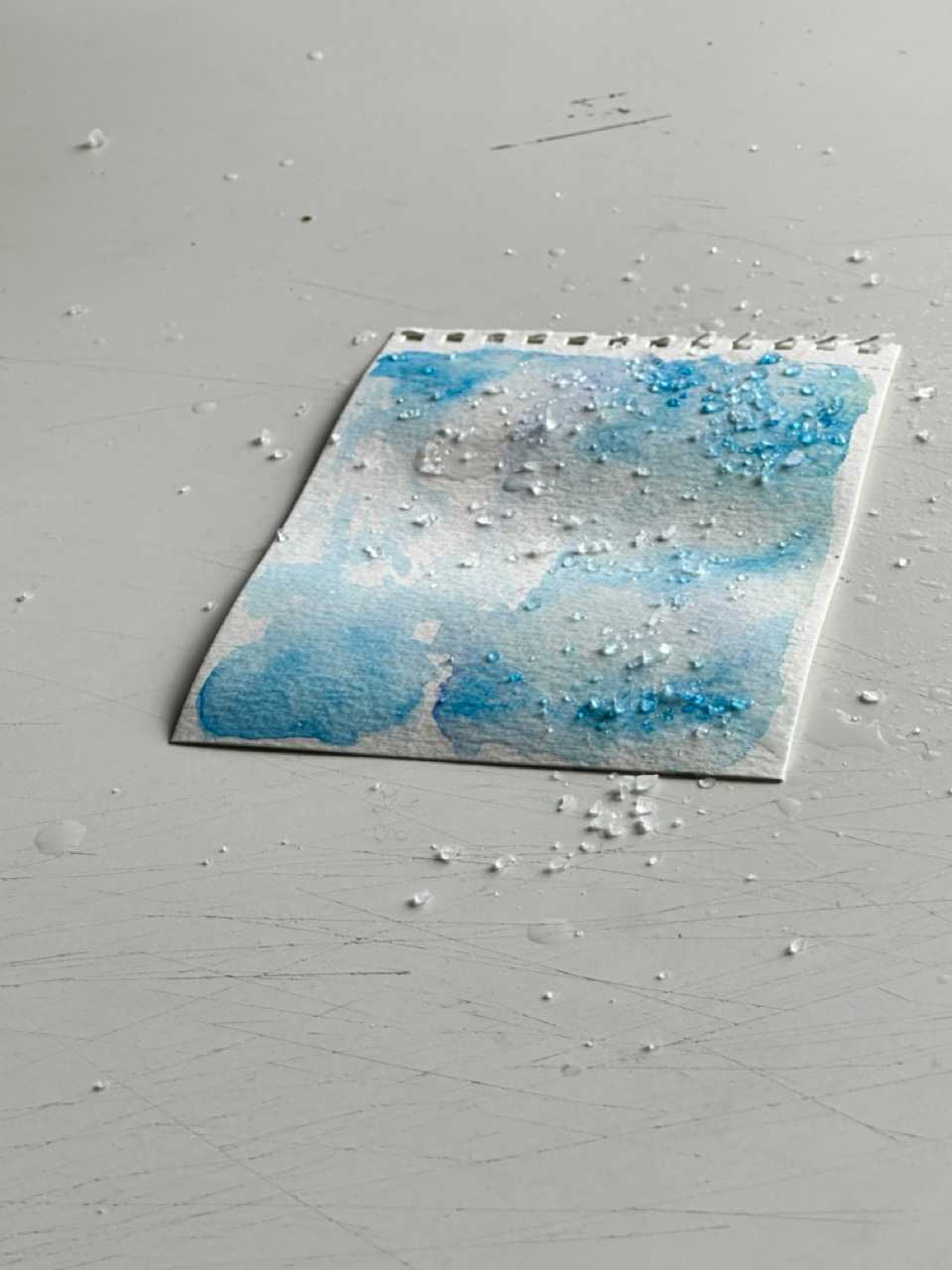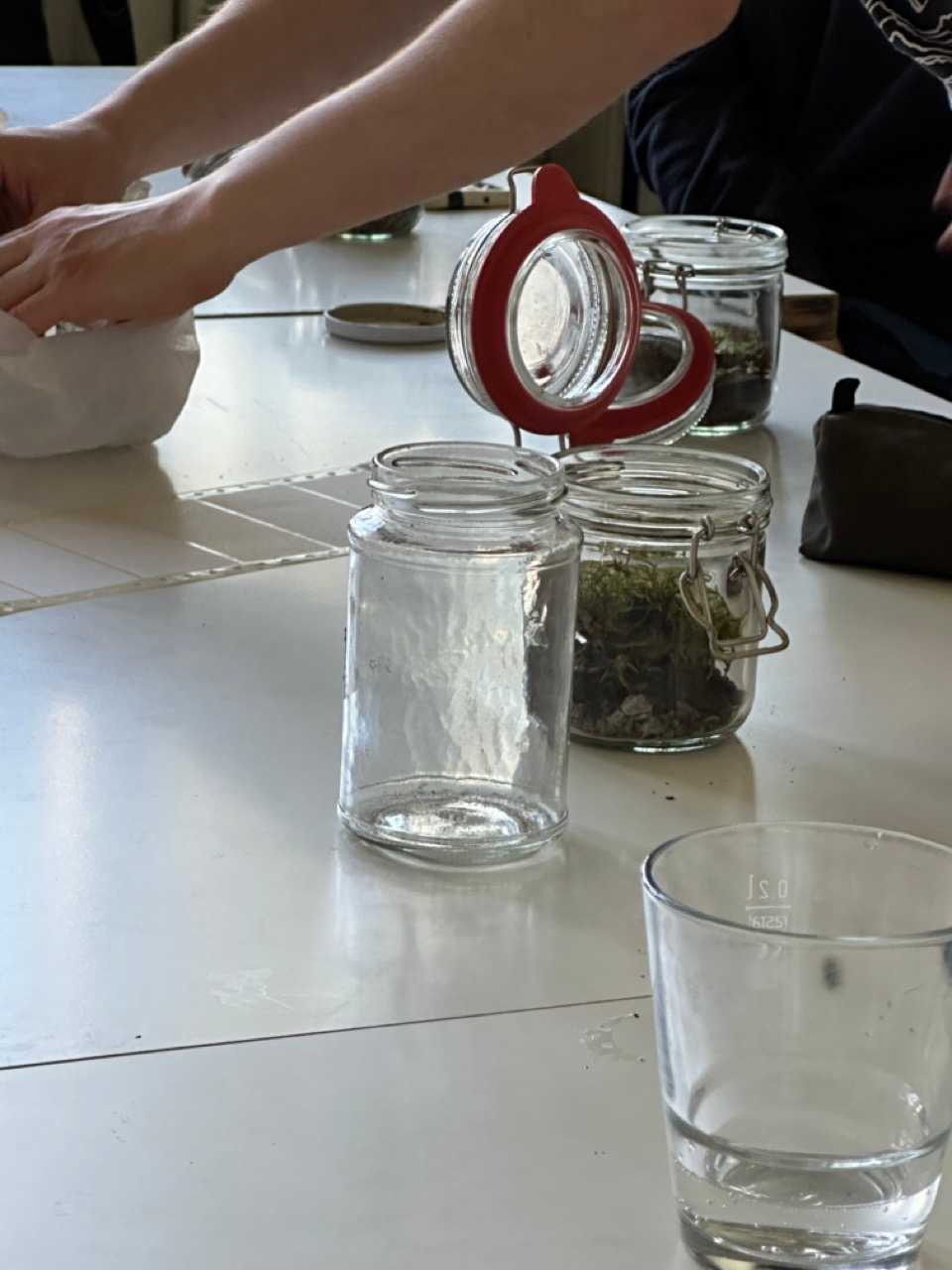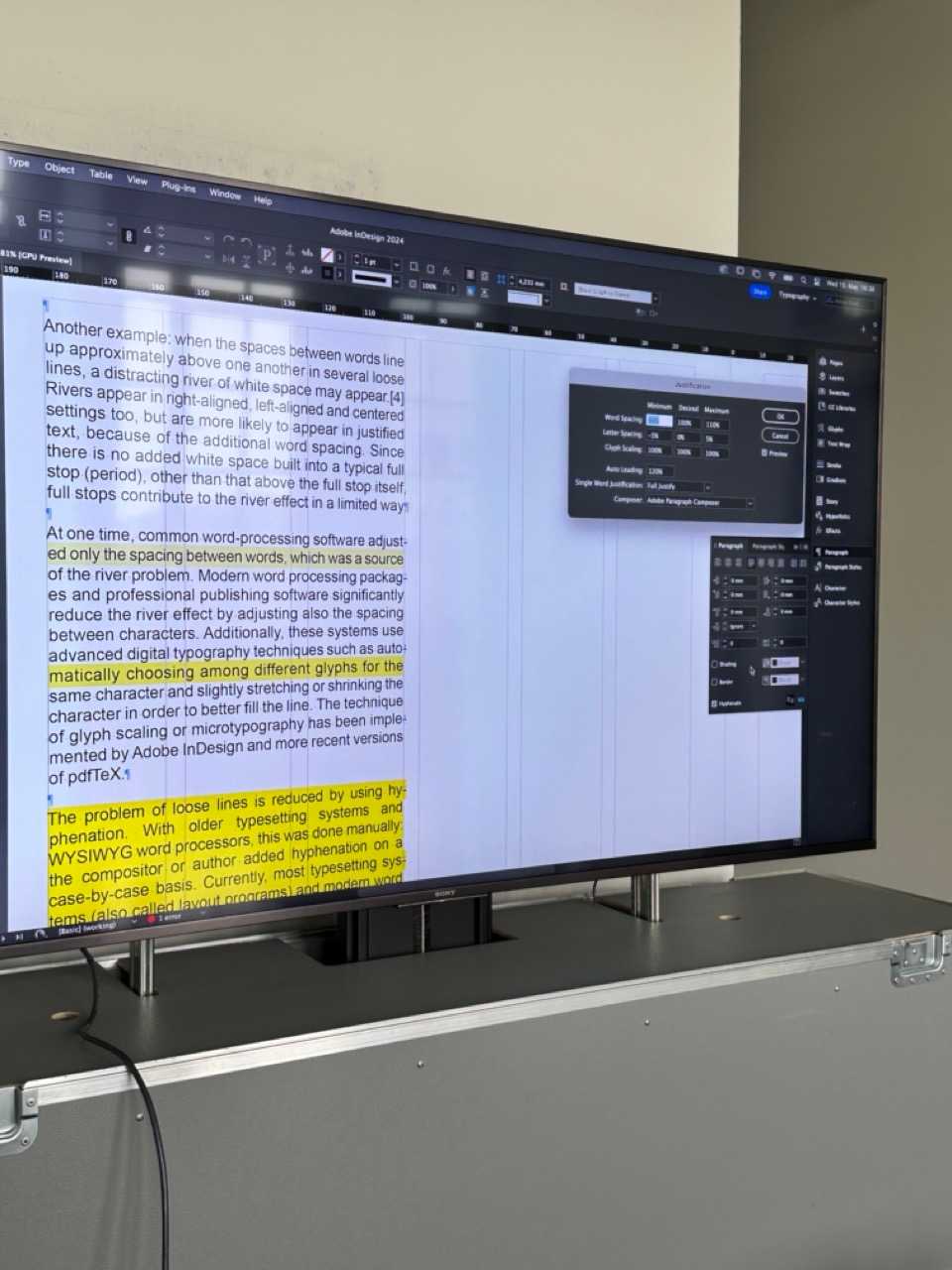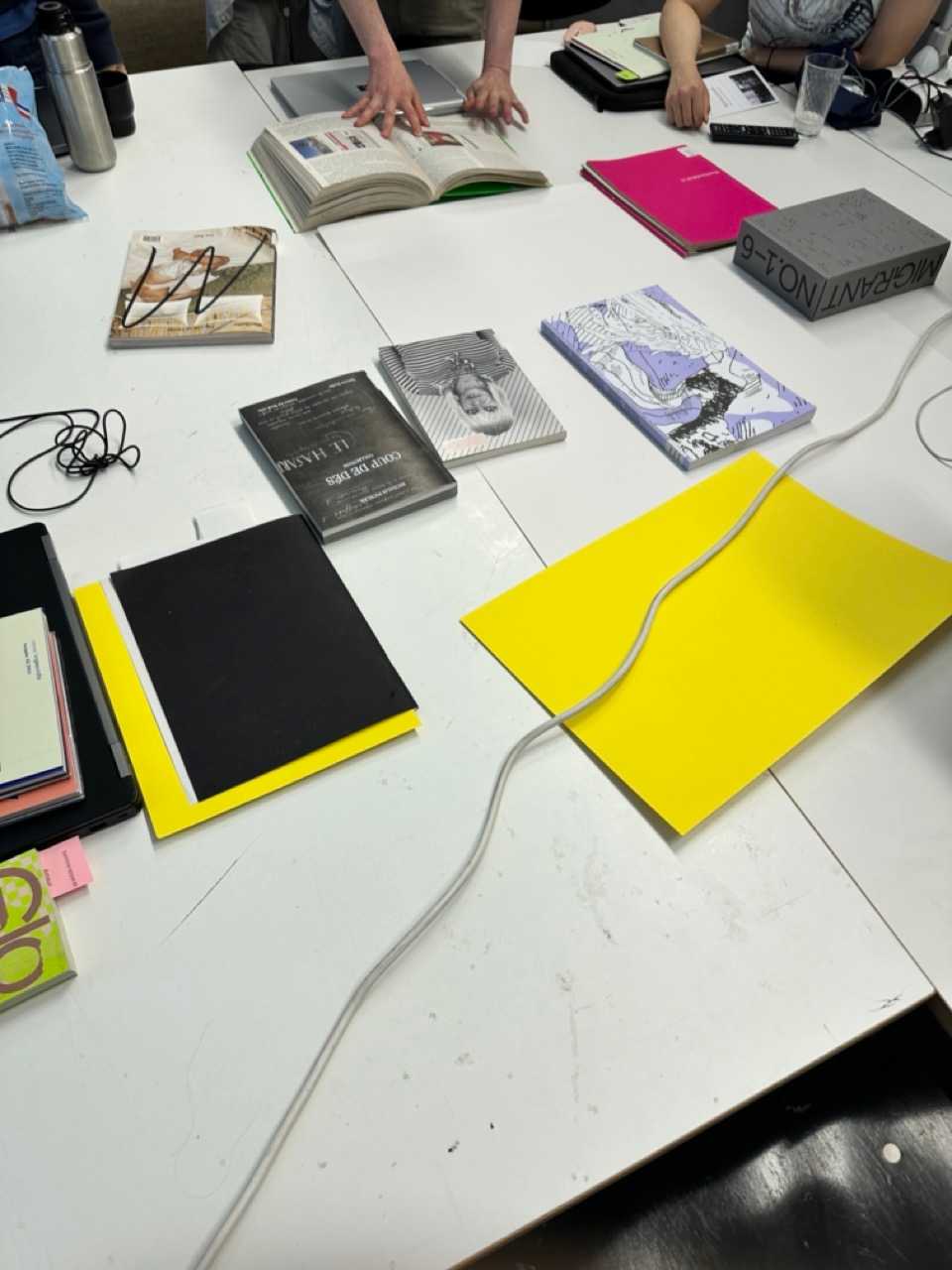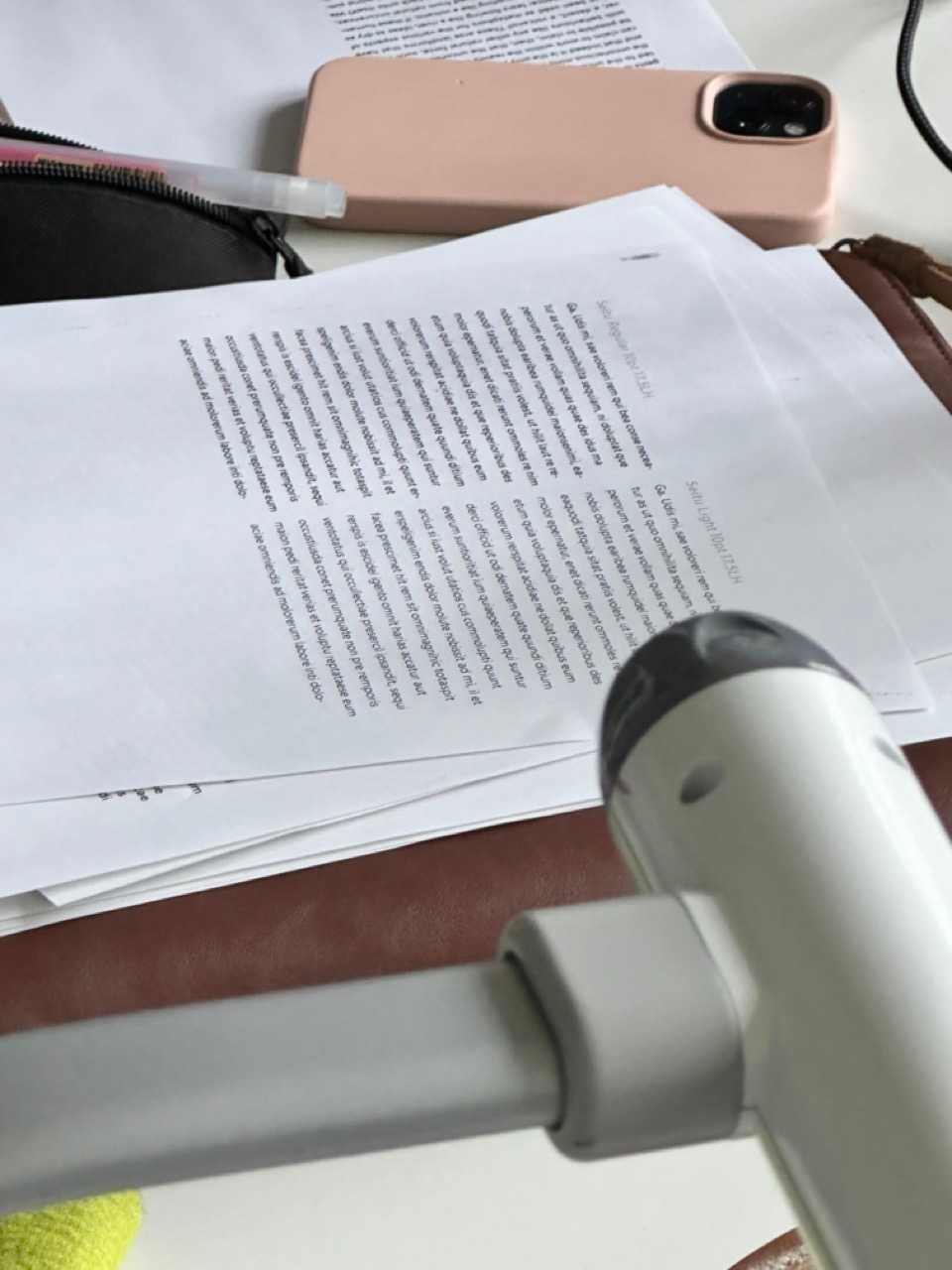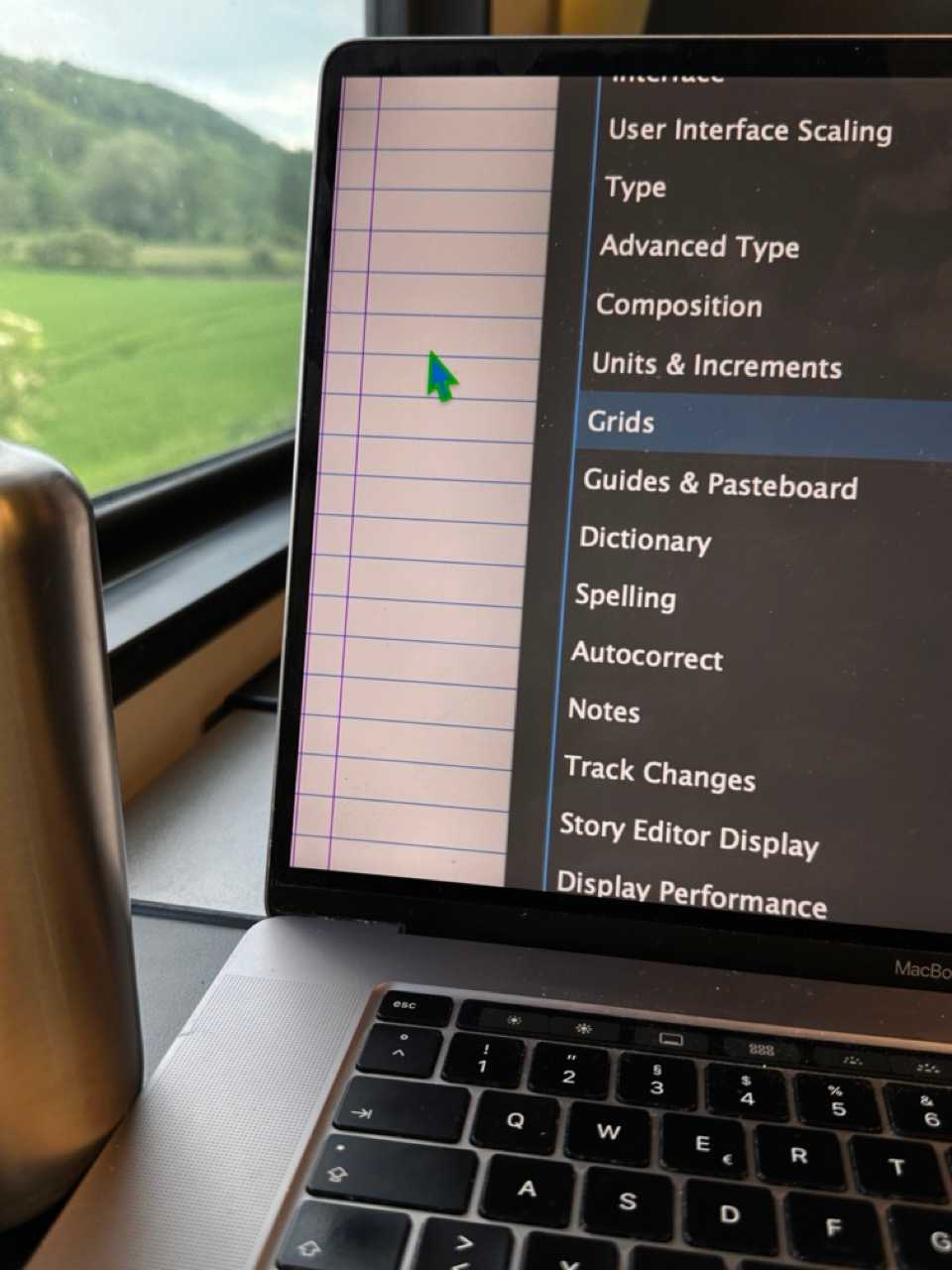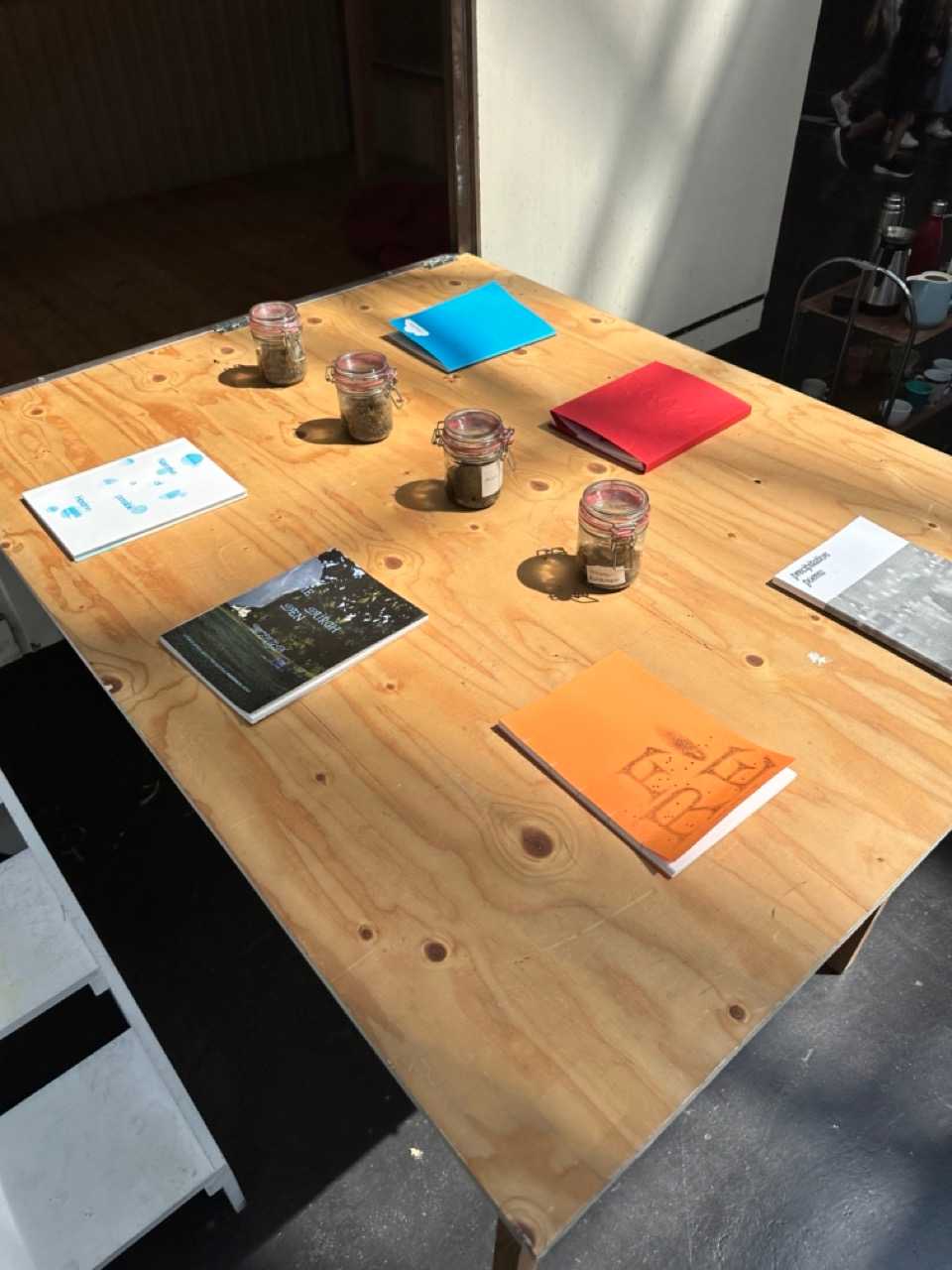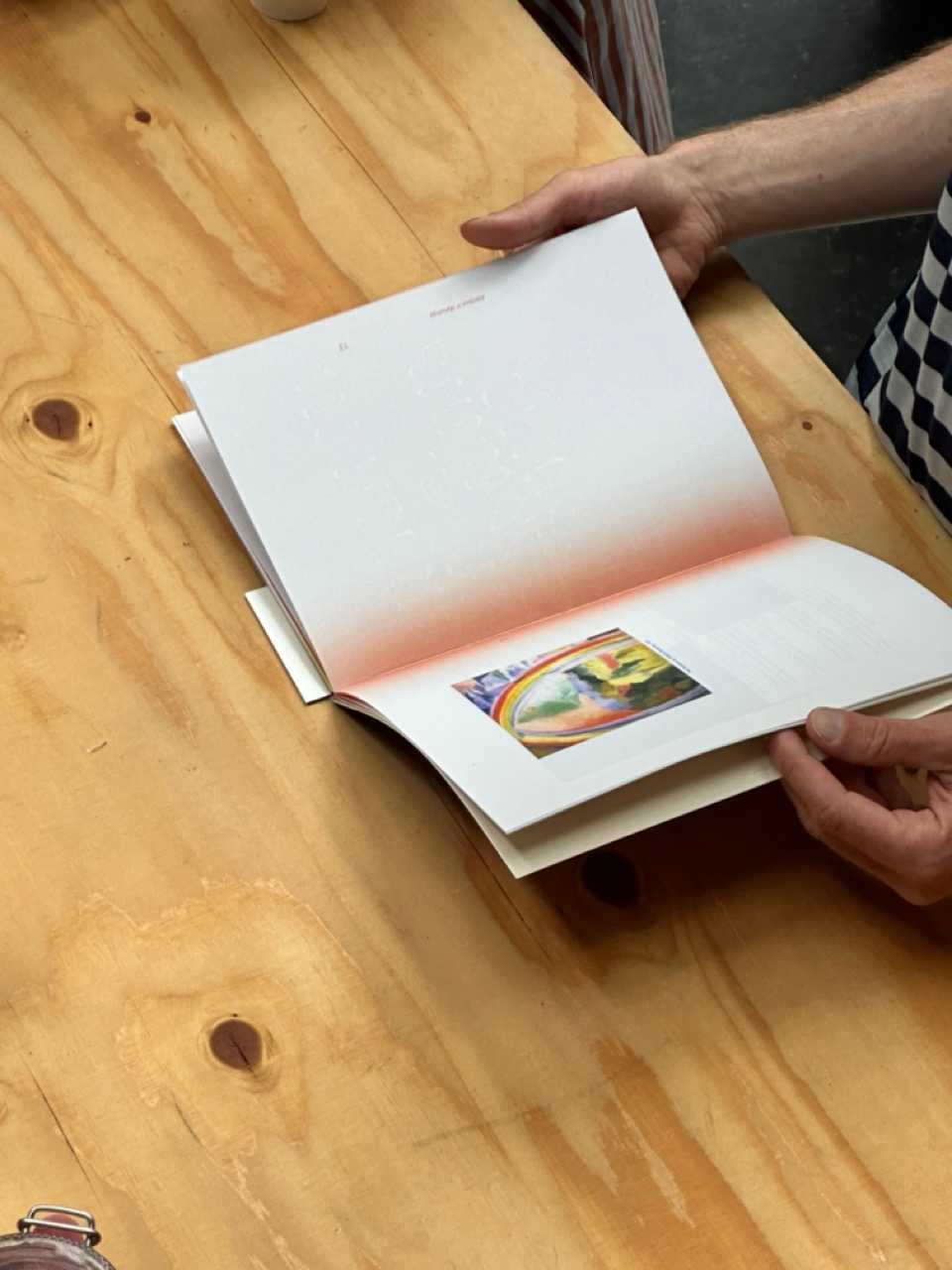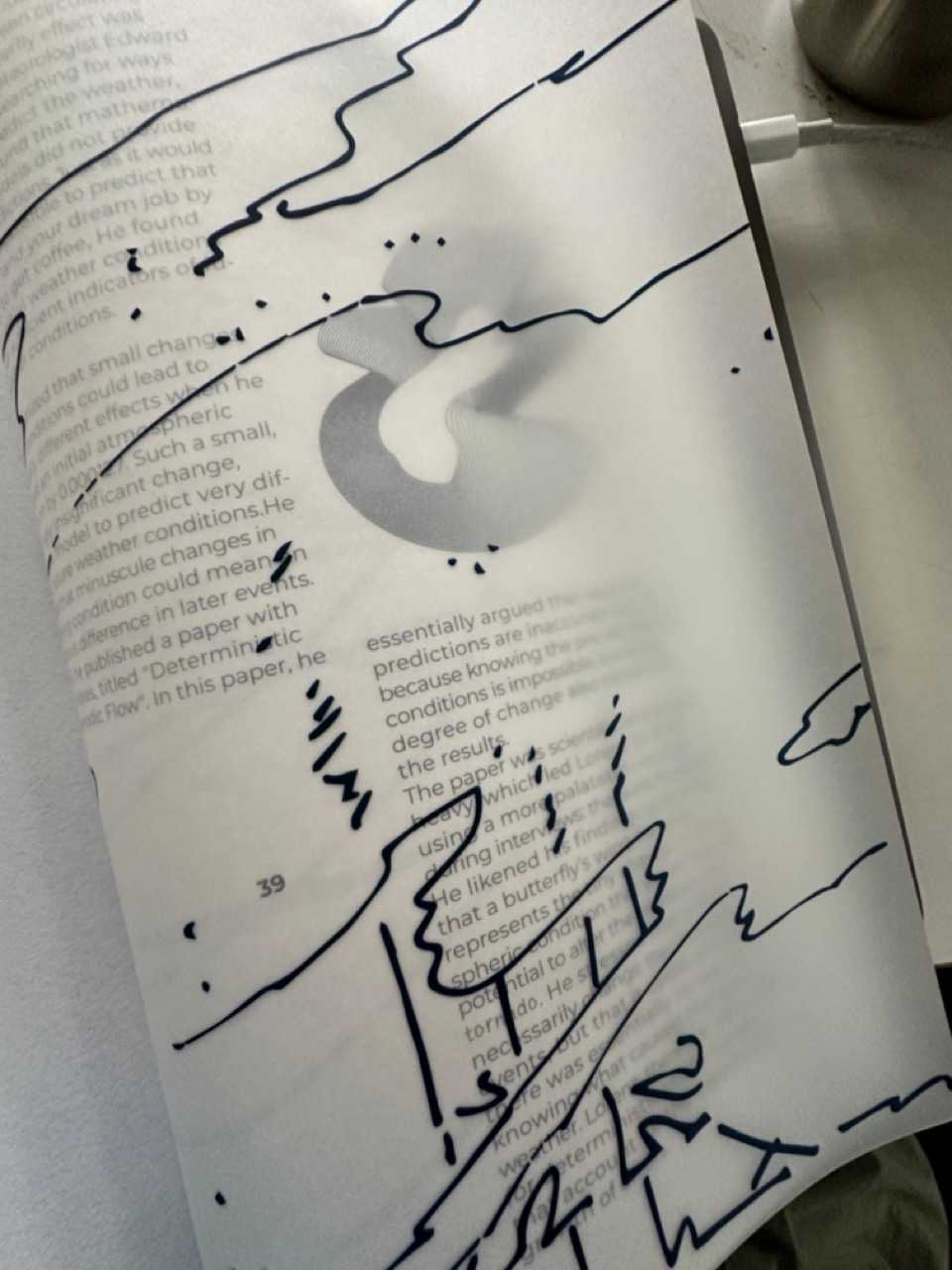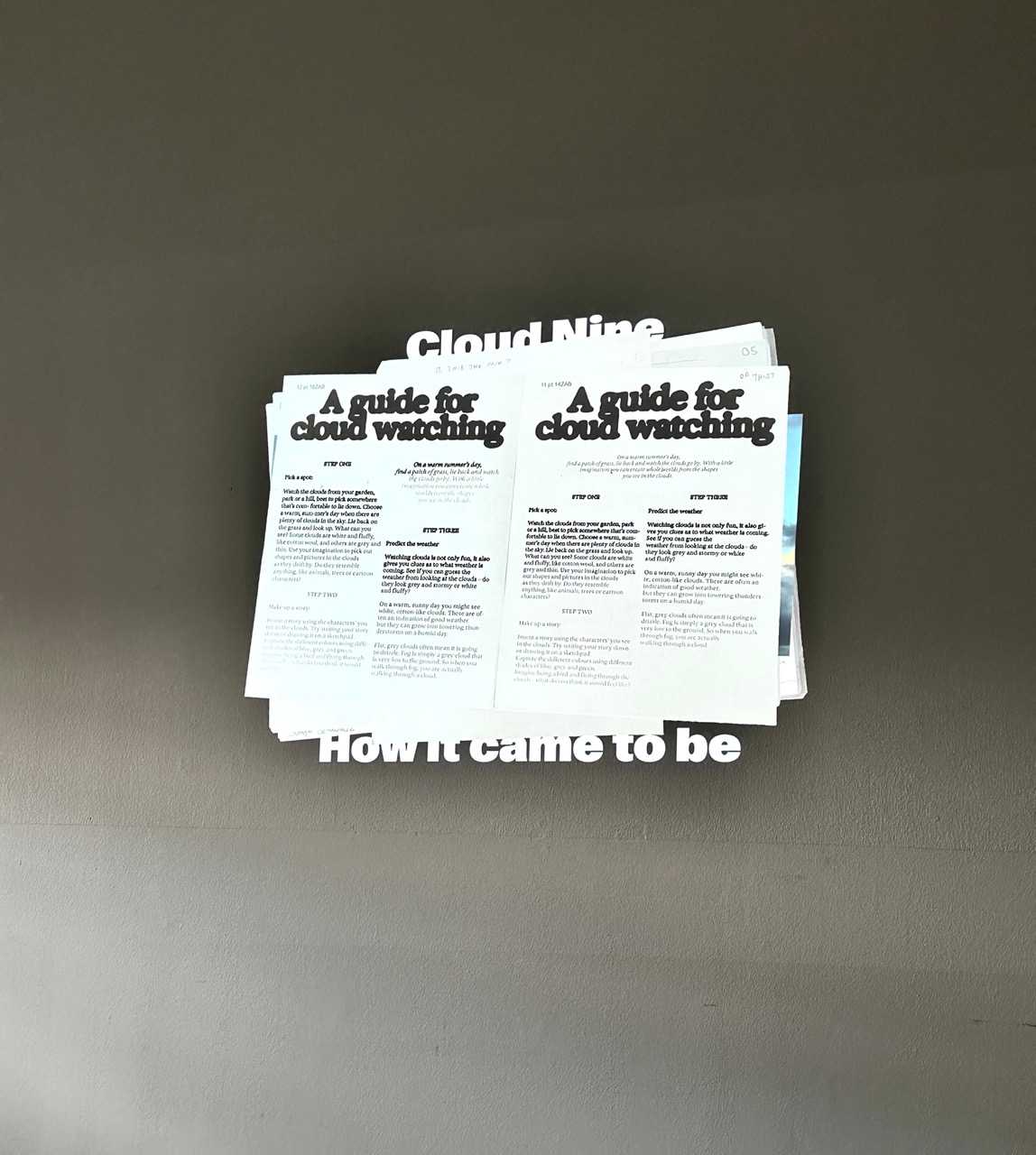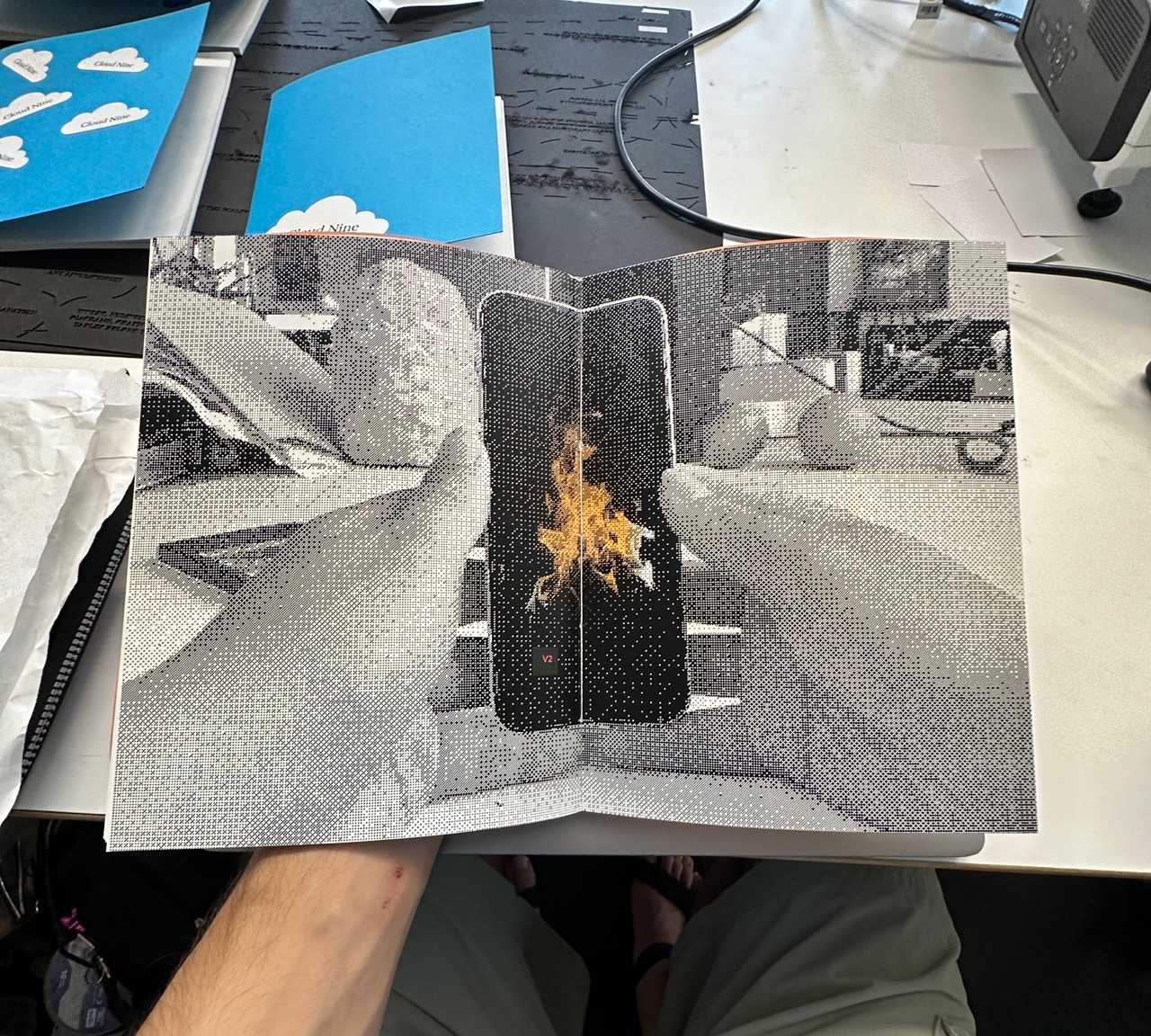“what binds the universe together at its core?”, Faust asks. “what binds Typography together at its core?”, you ask back. — how do you kern a word ? how do you collect clouds? use a grid? chase rainbows? justify text? sort through rain? use punctuation marks? listen to dust? build information hierarchies? wait for sand? format footnotes? turn to air? — we will work on publications as instruction manuals for natural phenomena, in order to explore micro- and macrotypography, research and performance.
Schedule
DAY 1 Natural Phenomena
Introduction, Identity, kerning
DAY 2 Instructing Instructions
Workshop with Sonja Schwarz: Figures & Figurations
Macrotypography, Fontsize, Lineheight
DAY 3 Justice
Grid Systems, Text Alignment and Justification: Rag, justified
DAY 4 Baseline
Baseline Grid, grid preferences, alignment, text alignment, margin alignment/ calculation Hierarchies, Title, Author, Subtitle, Paragraph, Subtitle, Quote, Margin, Footnotes paragraph styles, Character Styles
DAY 5 Types of Reading
Layout, Types of Reading, Lesetypografie, Examples, Headline lineheight, Margin Text, Footnotes
Page Number (parent page), Chapter Info, Use of Columns
Caption, Quote
DAY 6 Microtypography
Microtypography, minus, divis/hyphen, en dash, em dash numerals, quotation marks, spaces
DAY 7 Research
Storytelling Gutter, Images Links, Tab, Export, Cover, Table of Contents, Index, Imprint
Reseach Methods: Observing, Recording, Comparing, Analysing, Evaluating, Proposing, Experimenting, Documenting,
DAY 8 Content
Dramaturgy, Chapters, file checks
DAY 9 AGBs
Working Groups: Deadline: Production, Bookbinding
on working conditions, bills, project managment
DAY 10 Presentations
Finalizing, Presentations, Seminar feedback
Goals
- Ability to design a publication from start to finish, including research, original content and production.
- Filtering, Organization and Composition of complex Information and Ressources.
- Awareness for aesthetic choices and clear readability.
Publication
- Printed and bound Book/ Magazine
- format: 19x25cm
- min 40 pages
- fetaturing Instructions as well as structured Research
- Research in scientific, ecological, cultural, social, economical, political, juristic, ethical contexts (min 3)
- various chapters with different styles
Inspired by the work of friend and colleague Sonja Schwarz on Instruction Manuals for water I was very excited on the format of instruction manuals, not only as means to work with typography but also as a medium to interact and to perform. I expanded the idea to other natural phenomena, one for every student:
Phenomena
- Tornado
- Rain
- Rainbow
- Erosion
- thunder
- horizon
- Fire
- Clouds
- Air
- moon phases
- swamp
- Vulcano
Figures & Figurations, Workshop with Sonja Schwarz
Instructions for Natural Phenomena (led by the students)
Typography Training
Grid Systems

Section from Grid Systems in Graphic Design by Josef Müller-Brockmann
Quite the weird and maybe even problematic quote about in my opinion the (cultural) superiority of the grid and the supposed neutrality from Grid Systems from Josef Müller-Brockmann. Still a very common book in graphic design education and nevertheless working with grids can be very useful und helpful to structure and follow information for both designer and reader.
Presentation
Publications
A few pages of each publication cut together
The publications include research, instruction manuals and the results of these. Most books were printed and bound in the school with the great help of the KD Plottis and Tjark Schönfeld.
A few Ressources
Alan Sonfist, Natural Phenomena as Public Monuments | Are.na
Participants
Eunsoo Choi
Lena Klevenow
Levi Zimmermann
Max Beller
Helena Bänsch
Jinhyung Hur
Kaya Männel
Jiaxuan He
Finn Milbrandt
Nayeon Park
Veronika Baghdyan
Min Jung Kim
Alice Seefried
